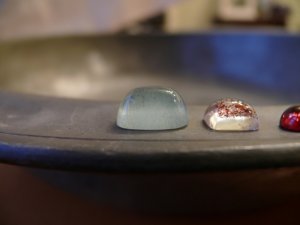Candice
Shiny_Rock
- Joined
- Mar 8, 2009
- Messages
- 182
Hi pricescopers,
I am looking for a sugarloaf gem- preferably one in a light colour like aquamarine. but if one "sings" to me in a vibrant colour then I may go that route. which vendors can you recommend that carry some? I know of Swala, but they dont have that many right now.
thanks
Candice
I am looking for a sugarloaf gem- preferably one in a light colour like aquamarine. but if one "sings" to me in a vibrant colour then I may go that route. which vendors can you recommend that carry some? I know of Swala, but they dont have that many right now.
thanks
Candice






300x240.png)